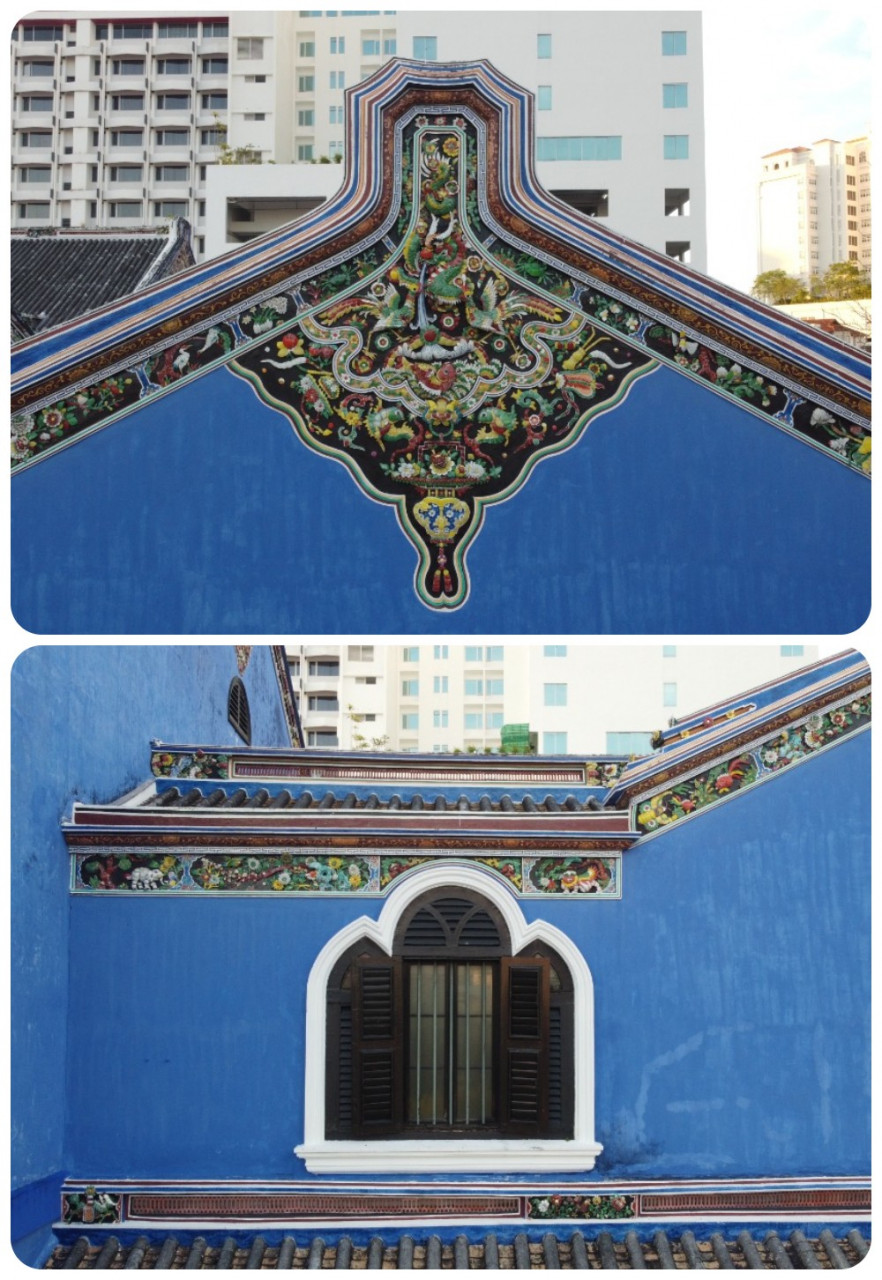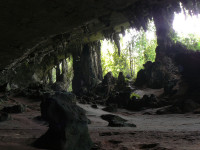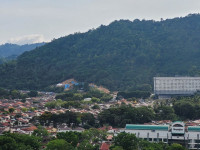CHIEN Nien, which translates to ‘cut and paste’ denotes the art of using bright coloured porcelain shards to create vibrant designs, formations and figures on roofs, gables and facades of buildings – in particular temples, palaces and elaborate mansions.
Created by 17th century Qing Dynasty architects, the origins of this craft can be traced to southern China’s Guangdong province. The bright intricate designs on temples, mansions and other structures mostly feature elements of nature, animals, gods and goddesses, humans, legends and mythologies.
This craft was brought to the Malay Peninsular in the mid to late 1800s, when the Chinese diaspora spread throughout the world – moving for social, political and economic reasons.
.jpg)
Many moved to South East Asian destinations to seek their fortune in the tin mining industry in places such as the state of Perak and Selangor, and Phuket in Thailand. Some set up businesses in port cities like Penang, Melaka and Singapore.
The art of Chien Nien can be found on the facades of temples, mansions and Straits Eclectic shop houses in these places. However, over the decades, many old mansions and structures with beautiful Chien Nien art work have been torn down for redevelopment.
Even if these buildings were refurbished, the absence of skilled artisans locally to repair sections of broken porcelain shard work or restore these, have resulted in affected sections being removed altogether, or replaced with tiles commonly used in bathrooms – simply referred to as bathroom mosaic.
Cheong Fatt Tze, a relic of a bygone era
In Malaysia, one of the most meticulously preserved and maintained structures that display this ‘cut and paste’ ceramic shard work is the Cheong Fatt Tze mansion in George Town, Penang – also known as the Blue Mansion, owing to the indigo blue lime wash that covers its walls.
The owners of this mansion, Laurence Loh and Loh-Lim Lin Lee spared no costs for restoration works to the dilapidated mansion that they purchased in 1990. One of the main objectives of restoration works to the Blue Mansion was to preserve and conserve as much of the original fabric as possible to maintain authenticity.
.jpg)
Skilled craftsmen were brought in from China specifically for this restoration project. More than 10,000 ceramic bowls were imported from Fujian in China to fix the badly damaged sections as the quality of locally made ceramic is not suitable. The restoration process involved the cutting of specially produced rice bowls (unglazed on the inside) with special pliers, to fabricate shards of porcelain. These little shards are then pasted with putty to create elaborate patterns and forms of humans, animals and scenery, depicting Chinese mythology, Gods and heaven.
The mansion was built by Hakka merchant Cheong Fatt Tze in the late 1880s for the 7th of his eight wives, and was one of many homes he built in Indonesia, Hong Kong and Singapore. It was the home in which he spent the most time and was fashioned after his ancestral home in Taipu, China.
Located on Leith Street, this blue mansion had also doubled up as the Chinese Vice-Consulate in Penang during Cheong’s time there.
This building departs from the popular Anglo-Indian architectural style mansions built around George Town during that period. In its prime, the mansion included stables at the back of the property and a row of five traditional Chinese terrace houses across the road which housed the help, handmaidens and concubines.

The Chien Nien decorating the mansion’s gables and roofs are one of the most striking features of this mansion. Cheong Fatt Tze is thought to have engaged readily available Fujianese and Teochew artisans, who were in Penang during the late 1800s to decorate temples constructed by Chinese immigrants in the Straits Settlements, to work on the Blue Mansion.
From the late 18th till the early 20th century, Penang was a thriving port city and trading post, first for the British East India Company and later as a British Crown Colony – before Singapore outrivalled it. During this time George Town was a hub for skilled traditional craftsmen and artisans.
Loo Pun Hong and the loss of tradition
On Love Lane in George Town, a temple dedicated to Loo Pun Hong – the patron of Chinese building trade practitioners, was built in the 19th century. Traditional craftsmen seeking jobs in the Malay Peninsular and throughout the region would stop there to pay their respects and ask for guidance before continuing on their journey.
Sadly, today the temple is as dilapidated as the craftsmen and crafts it represents. The temple caretakers had to sell antiques within it to fund maintenance work on the temple in the mid-1990s, writes Gwynn Jenkins in her book Contested Spaces Revisited. The temple’s fate is representative of the state of traditional crafts and trade in this country.
.jpg)
A few conservationists have taken on the task of maintaining, and showcasing, the few remaining structures with examples of the traditional Chien Nien designs that require special skills and knowledge.
One of the major challenges in our heritage industry is the diminishing pool of skilled traditional craftsmen and artisans whose knowledge and expertise are crucial to the authenticity and maintenance of traditional heritage structures – this includes skills encompassing other traditional construction designs and methods.
It is mostly foreign construction workers who are trained by the artisans and masters to help with repair and restoration works. These workers eventually return to their countries of origin once their contracts are over. There is currently no known concession in place for workers with these skills to remain in Malaysia.
Loh said, there is often much talk about training and development of these crafts during conferences, but this is not followed up with any sustainable effort to incentivise or introduce vocational programmes.
.jpg)
“It is good to be idealistic but programmes to promote skills and craft like Chien Nien has to be financially and economically desirable and sustainable in the long term, organisations like the Construction Industry Development Board (CIDB) must look into developing, promoting and adapting traditional skills like this,” Loh suggested.
However, questions on this topic sent to CIDB were met with this response via email: “This matter is outside the scope of CIDB.”
There is a lack of interest among youth to master these ancient skills because of the long hours and the frequent exposure to harsh weather. It takes about two to three months to complete a Chien Nien scene on a temple roof. The returns are lucrative – a medium sized Chien Nien art work can cost about US$40,000 (almost RM180,000) – and there is a demand, despite the lack of craftsmen.
.jpg)
In Malaysia the weakness in efforts to address the diminishing pool or absence of skilled traditional artisans and craftsmen are highlighted in Malaysia’s Dossier to Unesco (Malaysia’s Nomination Dossier, 2005), whereby despite a number of organisations in the public and private sector, as well as non-governmental organisations conducting training on management techniques for conservation programme in Malaysia – these are limited to ‘management and technical expertise’ and do not include ‘traditional’ building artisan skills. Recent efforts have managed to revive only some basic skills such as lime plastering, lime wash and timber restoration.
Chien Nien is a craft that has not been given much exposure, almost forgotten and lost to the people and visitors who may appreciate the aesthetic value of what they are viewing in a building, but are oblivious to the traditional craftsmanship that has gone into creating the beautiful formations.
At most, these bright and vibrant artisan work will appear on Instagram or Facebook feeds – with little knowledge and appreciation for the unique art that skilled craftsmen designed, created and bequeathed to our historic sites and cities centuries ago. – The Vibes, August 21, 2022



.jpg)
















.jpg)

